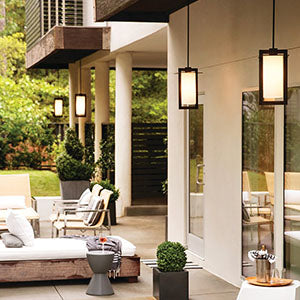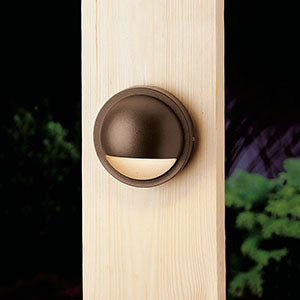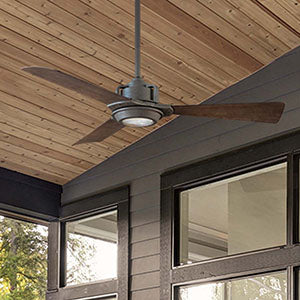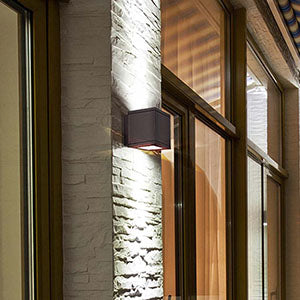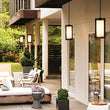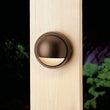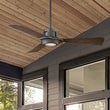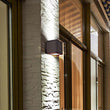Lighting
19 Spring Outdoor Lighting Strategies for Exteriors That Bloom at Night
When spring arrives, we're all grateful for the longer days. But the sun eventually goes down, and you still want to enjoy your outdoor spaces well into the evening. The secret is in the lighting—from creating a fun and functional outdoor living space to showcasing lovely trees, a budding container garden, and striking architectural elements. Read on for spring outdoor lighting strategies, tips, and ideas to help you make the most of the season's beautiful weather.
Think Like a Lighting Designer

Begin with your home, then move to lighting your pathways, patio, and landscaping.
1. Start lighting near your house and move outward
Begin with your home, then move to lighting your pathways, patio, and landscaping. This strategy ensures your exterior lighting design doesn't produce overlit spaces and glare.
Light the walls of the house, entryways, and architectural features for aesthetics as well as security. Make sure your pathways are navigable, and your outdoor gathering spaces are warm and inviting. Depending on the size of your property, your house, path, and patio lights may illuminate your front and back yard sufficiently. If not, add landscaping light fixtures to light greenery and other natural and architectural features.
2. Check your handiwork from indoors
When you look out your windows at night, do you see nothing but black? Patio and landscape lighting can (and should!) provide aesthetic benefits from the inside out. As you add to your outdoor lighting, check the results from inside. Ideally, the light should have an appealing glow rather than harsh brightness. And the lights should draw your eyes to lilac and forsythia bushes, statuary, and other outdoor elements. If the lights draw attention to themselves, you may have placed too many fixtures close together or have the angles wrong.

Add depth and levels to outdoor spaces with path lighting.
3. Add simple accent lights for an outdoor layered effect
Path lighting, in-ground lighting, and deck or rail step lights add depth and levels to outdoor spaces. These style fixtures are also unobtrusive ways to define yard borders and highlight landscaping and architectural features. Shoot for bulbs in the 2700K to 3000K range for calm and inviting warm whites.
4. Set a laid-back, inviting mood with ambient lighting
Wall sconces and hanging light fixtures—think chandeliers and pendants—deliver easy-going panache to your outdoor gathering spots from patios to pergolas. These elements are the perfect opportunity to expand your outdoor style beyond the ordinary. Add color with art-glass pendants or rustic elegance with a linear chandelier. Keep the bulb intensity in the 2000K to 2500K range for a warm glow similar to candles or tiki torches.
5. Use outdoor task lighting where you need it most
Surface-mount downlights, recessed/flush mount fixtures, and flood lights provide ambiance and serve a purpose. With strategic placement, you'll ensure safe navigation between the patio and the pool, and deliver helpful brightness to the grill area or outdoor kitchen when in use. Bulbs in the 3100K to 4600K range give off an invigorating cool white light.
Add Drama to Your Landscaping

Add evening drama to a flower bed.
6. Use cross-lighting to capture attention
Highlight trees, sculptures, or similar elements with two ground spotlights set in front of the focal point, but off to the sides. Aim the two lights back towards the element you wish to illuminate, with one fixture angled slightly higher than the other to light more of the feature. You can use another ground light behind for a third layer.
7. Wash walls in light
Use low-intensity flood lights to cast an even wash of light across retaining walls or sides of your home.
8. Place lights high for a magical moonlight effect
Position lights up high in a tree or trees, and angle the lights downward to cast a glow from above on the branches, leaves, and trunks of nearby trees. (Important note: This is not a DIY job. A professional electrician with a specialty in outdoor lighting should install these lights.)
9. Angle lights so they graze elements without harshness
Upward-facing ground lights can cast a soft glow on a wall, or create a harsh spotlight effect. Before installing, hook the fixture up to an extension cord and play with the positioning and angle at night so you get the diffuse impact you want.

Highlight an intriguing architectural element.
10. Add intrigue through silhouetting
Shine a ground light or spot light onto shrubs or towards a wall directly behind an interesting outdoor feature, such as a statue or fountain.
11. Add artful shadows
The opposite of silhouetting—here, light shines on the front of the outdoor feature and casts its shadow onto a wall or hedgerow.
Focus on Safety, Navigation, and Beauty

Use light to connect outdoor spaces.
12. Use light to connect outdoor spaces
Guide your friends and family from porch to patio to pool with low-level lantern post lights or bollard lights. These fixtures deliver style and light, so choose ones that match your architecture, whether that's modern or traditional. Use step lights or flood lights to illuminate stairs to your porch, patio, or gazebo.
13. Prioritize security
Lighting for security is truly unique to each house and property. Perhaps your house has a dense collection of trees to one side of your house, or you have a narrow walkway between your garage and a neighbor's fence. You'll have to factor those into your design. However, there are common areas to keep in mind when designing outdoor lighting for security, including:
- Large spaces like the backyard, patio, deck, porches, and swimming pools.
- Paved walkways, paths, stairs, and in between bushes, trees and flower beds.
- The perimeter of the yard, whether or not it is marked by physical structures like fences, stone walls, trees, or flora.
14. Select fixtures designed for outdoors
Outdoor lighting fixtures are designed for use outdoors, with some designs resistant to moisture and others able to withstand a good drenching. Here's what you need to know:
- Damp Rated – Fixtures like outdoor chandeliers, ceiling fans, pendants, table and floor lamps, and some outdoor wall sconces are often damp-rated. These are for use in covered or semi-covered areas exposed to moisture and humidity, but NOT saturating rainfall or irrigation.
- Wet Rated – Flood lights, deck/stair lights, landscape and pathway lighting, sconces, and ground-based spot lights are wet-rated fixtures. These are designed to withstand any amount of water and moisture, so long as they're properly installed and not damaged by landscaping or cleaning equipment.

Choose outdoor lighting styles with daytime in mind.
15. Choose outdoor lighting styles with daytime in mind
The lighting you select for your patio and landscaping will be visible during the day as well as night—choose wisely. If you're fond of Craftsman-style architecture, add simple fixtures with squared lines and sturdy quality. If your style is ornate, choose fixtures with intricate cutouts or dramatic chandeliers. Pay attention to prominent design elements, such as clear or frosted glass bulb coverings, the metal type, and the finish. Where hammered bronze has a vintage beauty, brushed stainless steel delivers contemporary panache. Take our Style Quiz, if you're not sure of your design preferences.
Minimize Glare and Light Pollution
16. Automate your lighting
Installing motion detectors on floodlights, sconces, and pathway lights can illuminate patios, walkways, and other outdoor areas when you need them after dark. Having landscape lighting on timers takes the guesswork out of things. In addition to minimizing glare, dimmers can set a welcoming mood outside by lighting patio pendants just before you get home from work. Any of these automated choices more than pay for themselves in energy savings and increased security and safety.

When installing landscape lighting—especially ground-based uplights—make sure it does not shine past its intended target.
17. Concentrate light beams
Add variety to your ground-based uplighting by using focus-beam spotlights with reflectors and setting some of the beams wide and making others more concentrated. You can also use pendants, chandeliers, and sconces with shades instead of fixtures with exposed bulbs or glass casings for targeted task lighting. This is useful above the patio bar or your favorite outdoor reading chair, where focused light is necessary.
18. Make your lighting neighborly
When installing landscape lighting—especially ground-based uplights—make sure it does not shine past its intended target into your windows, a neighbor's windows, or the street where it can interfere with drivers. The same goes for floodlights, surface-mounted downlights, and wall sconces. Install fixtures one at a time, then test them once the sun goes down.
19. Choose outdoor bulbs with brightness and color in mind
Various fixtures and placements call for different bulbs. For example, spotlights are typically brighter, while you want subtle, warm light emanating from accent fixtures. Outdoor lighting has three solid bulb options to mix and match: incandescent, LED, and halogen. As you choose your bulbs, pay attention to lumens (the higher the number, the brighter the light) and the Kelvin number (lower numbers deliver a warm golden glow, while higher numbers offer cool blue light).
Beautiful and strategic outdoor lighting encourages you and your family to spend more time outside enjoying the spring—and through every season of the year!

